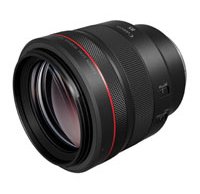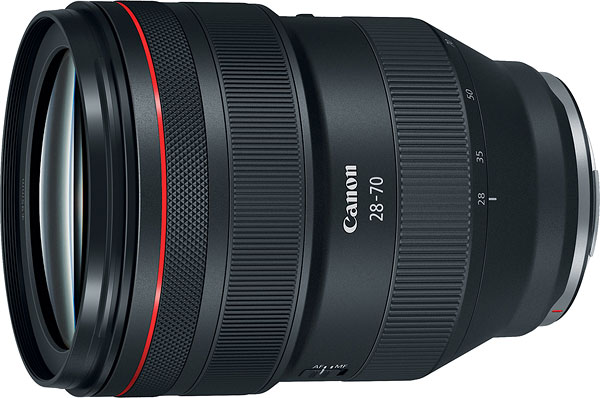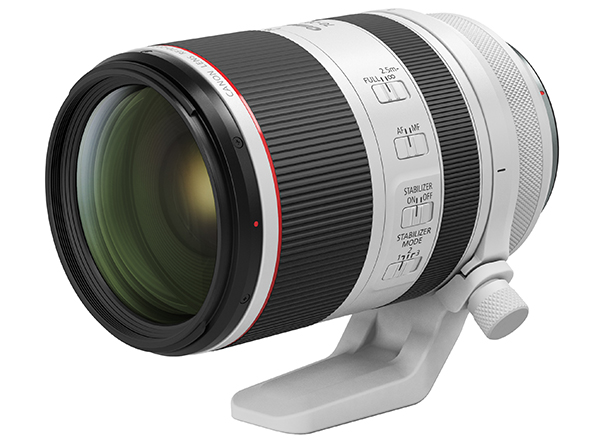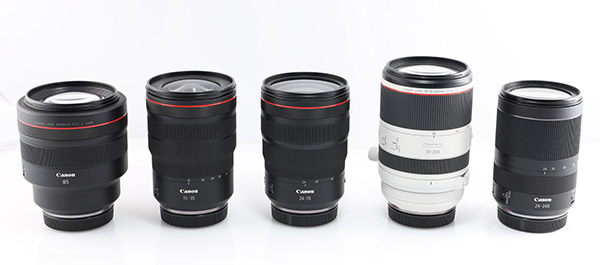Reimagining Optical Excellence: Why Canon RF-series Lenses Represent a Gateway to Growth for Lenses
posted Wednesday, June 5, 2019 at 3:15 PM EDT

When I was asked to write this article about Canon lenses, and in particular the new RF line, I thought I should give an explanation of Canon's history with lenses, talk about what we believe customers are looking for in a lens today and how we went about developing the RF series and why. We value the input from our customers and from customers of other products so we really want to keep the conversation going to deliver the best products possible for the market.
Canon has a long legacy in engineering quality optics for photography and video; a history that has evolved from the FD-mount to the EF-mount and now with the newest RF-mount lenses. In early 2019, Canon celebrated a production milestone of 140 million EF and RF lenses. Through the development of each series of lenses, the engineering process was adjusted and aligned to what we heard from our customers and what they wanted to and needed to create great images.
There has never been a more exciting time for those of us that shoot photos and video - more than 30 years since introducing the EF-mount, Canon is once again looking forward to what is going to carry the industry 30, even 40, years into the future. Canon is reimagining optical excellence, and I'd like to say "future-proofing." Canon's series of RF-mount lenses represent a new frontier in lens design and capabilities for mirrorless cameras. They are designed to fall perfectly in line with Canon's current and future timeline of camera and lens innovation.
Canon engineers are always looking for ways to improve their product lineup, keeping in mind questions like: "Where can we go with optics? Where do we need to go with optics? What's the future of optics?" The planning for the future starts here with the EOS R series of cameras and lenses.

With the RF-series, Canon's engineers are seeking to provide photographers and videographers the highest optical performance possible while also stretching the boundaries of what used to be deemed conceivable. In addition, we had to develop a high-performing camera system while considering size, weight and balance. Take for instance the new RF 28-70mm F2L USM -- this type of lens could have been made for a DSLR, but it would have not been small or light and would most certainly not be cost effective. If made for the EF- mount, it would most likely not be a lens you would want to or be able to carry with you all day.
Building a large-diameter lens mount, the same size as the EF Mount with the removal of the mirror box, it gives us the potential for a large rear element that can now be potentially closer to the sensor than in a DSLR design. In an effort to reduce optical aberrations, our lens designers can optimize that light path as it comes through the lens. The less you bend the light, the better the image quality.
The new RF-lenses reduce the need to correct for chromatic aberration and other aberrations that may need to be corrected as light travels through the lens. Previously, we would need additional lens elements, making the lens heavier and creating additional optical challenges in design. Therefore, by building a shorter back-focus distance and a very large diameter, our lens engineers can balance the specifics of the individual lens. Do we prioritize size and weight, optical performance, or even technical performance? The engineers now truly have the ability to create lenses they couldn't before with the constraints of the traditional DSLR with a mirror box.

Canon engineers are constantly working and discovering how to make RF lenses better for video capture, and that includes building high-end technology into the lenses. For example, the new RF 24-105mm F4 L IS USM and the "in development" trinity of F2.8 lenses (15-35 F2.8L IS USM, 24-70 F2.8L IS USM and 70-200 F2.8L IS USM) are designed with Nano USM technology to help achieve silent and smooth autofocus while shooting video. Other features for filmmakers include control rings, focus ring and zoom ring that can be customized for individual use.

Lenses are not only an extension of what a camera can do but an extension of the creativity that is within everyone. When the EOS R full-frame camera was announced in September 2018, we also introduced four RF lenses– the RF 35mm f/1.8 IS Macro STM, RF 50mm f/1.2L USM, RF 24-105mm f/4L IS USM, and RF 28-70mm f/2L USM. We recently announced six new RF lenses that are in development, the first of which, the RF 85mm F1.2 L USM was just officially announced last week and will begin shipping in June:
The RF 85mm F1.2 L USM is a large aperture mid-telephoto prime lens. It offers excellent performance for advanced and professional portrait photographers and is a widely popular focal length and aperture speed combination for users.
The remaining five new RF lenses will begin shipping throughout the rest of 2019 and include:
The RF 85mm F1.2 L USM DS, with Defocus Smoothing lens technology and featuring a super-fast F1.2 aperture, this uniquely designed lens offers a combination of beautifully smooth defocused bokeh that will help produce gorgeous portraits.
The RF 24-70mm F2.8 L IS USM is a high-performance, standard zoom lens for professionals and photo enthusiasts alike – ideal for shooting portraits, landscapes, documentaries or weddings.
The RF 15-35mm F2.8 L IS USM, offers a wide angle and fast aperture in a single package and is ideal for a variety of shooting applications including architecture, interiors or landscapes.
The RF 70-200mm F2.8 L IS USM is a great all-around, high-speed, medium telephoto zoom lens ideal for any professional photographer, especially those shooting weddings, sports or wildlife.
The RF 24-240mm F4-6.3 IS USM is the ideal compact and lightweight lens for amateurs and advanced amateurs who love to travel, no matter the destination.
The desire to document our lives, our adventures and our personal history through photography and video will never fade, and Canon is constantly striving to evolve the technology that helps capture these moments. Canon believes the EOS R system of cameras and lenses set the stage for the future of visual storytelling.
Note: This article was written and provided by Canon. We did not receive any financial compensation for this content. We will, from time to time, publish articles produced by manufacturers. Sometimes these may be sponsored articles, which we will always disclose.